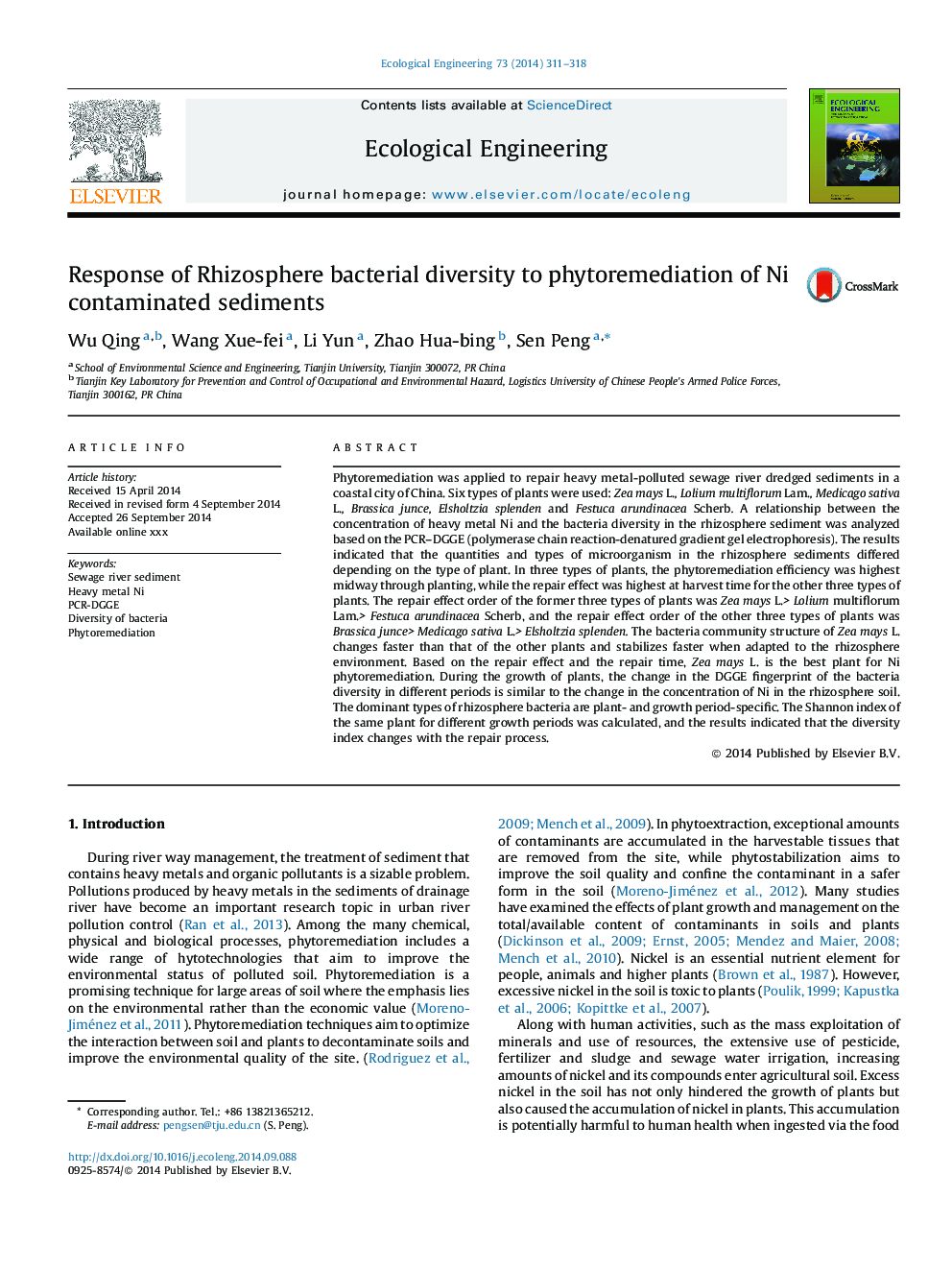| Article ID | Journal | Published Year | Pages | File Type |
|---|---|---|---|---|
| 6301932 | Ecological Engineering | 2014 | 8 Pages |
Abstract
Phytoremediation was applied to repair heavy metal-polluted sewage river dredged sediments in a coastal city of China. Six types of plants were used: Zea mays L., Lolium multiflorum Lam., Medicago sativa L., Brassica junce, Elsholtzia splenden and Festuca arundinacea Scherb. A relationship between the concentration of heavy metal Ni and the bacteria diversity in the rhizosphere sediment was analyzed based on the PCR-DGGE (polymerase chain reaction-denatured gradient gel electrophoresis). The results indicated that the quantities and types of microorganism in the rhizosphere sediments differed depending on the type of plant. In three types of plants, the phytoremediation efficiency was highest midway through planting, while the repair effect was highest at harvest time for the other three types of plants. The repair effect order of the former three types of plants was Zea mays L.> Lolium multiflorum Lam.> Festuca arundinacea Scherb, and the repair effect order of the other three types of plants was Brassica junce> Medicago sativa L.> Elsholtzia splenden. The bacteria community structure of Zea mays L. changes faster than that of the other plants and stabilizes faster when adapted to the rhizosphere environment. Based on the repair effect and the repair time, Zea mays L. is the best plant for Ni phytoremediation. During the growth of plants, the change in the DGGE fingerprint of the bacteria diversity in different periods is similar to the change in the concentration of Ni in the rhizosphere soil. The dominant types of rhizosphere bacteria are plant- and growth period-specific. The Shannon index of the same plant for different growth periods was calculated, and the results indicated that the diversity index changes with the repair process.
Keywords
Related Topics
Life Sciences
Agricultural and Biological Sciences
Ecology, Evolution, Behavior and Systematics
Authors
Wu Qing, Wang Xue-fei, Li Yun, Zhao Hua-bing, Sen Peng,
